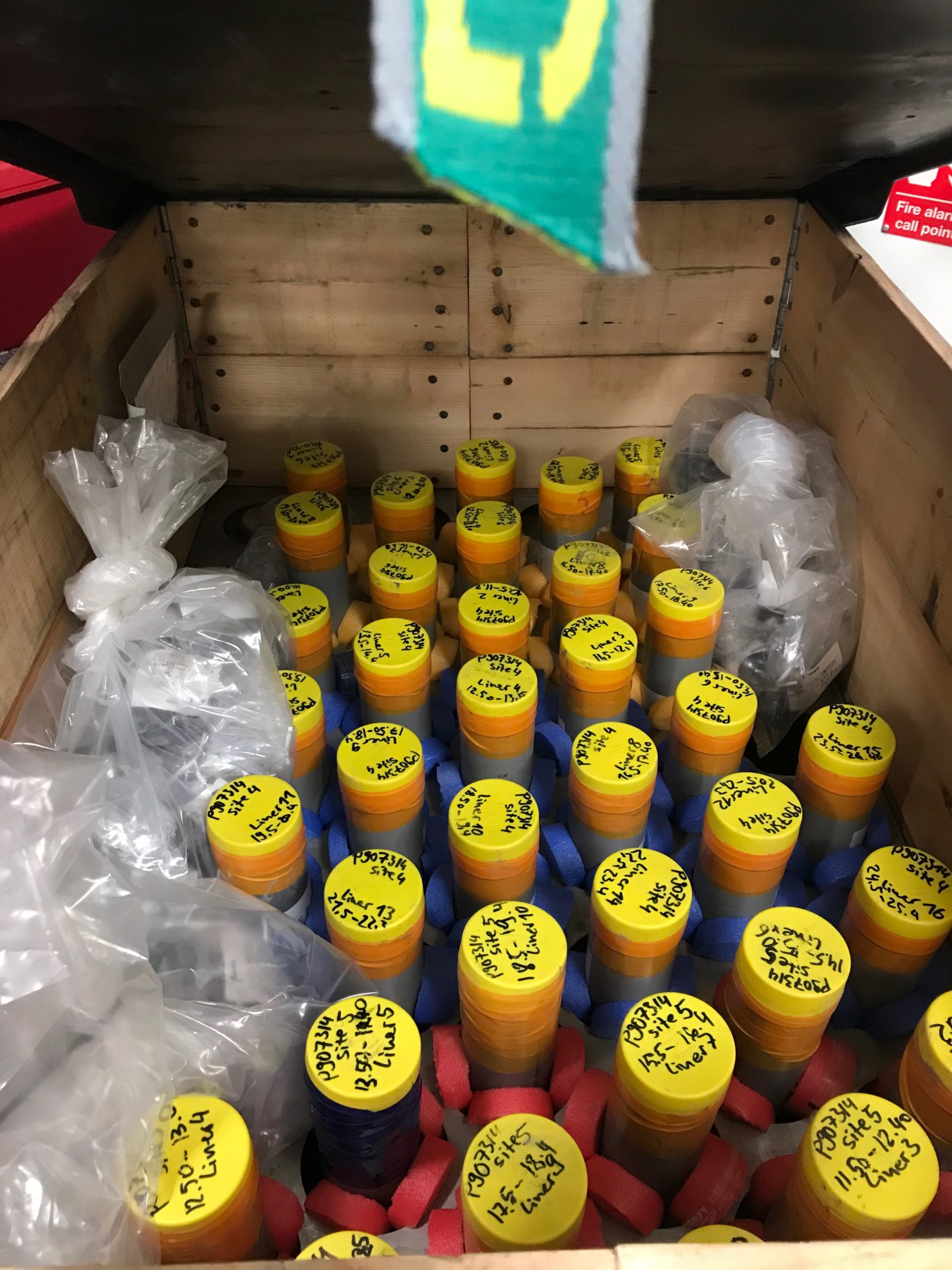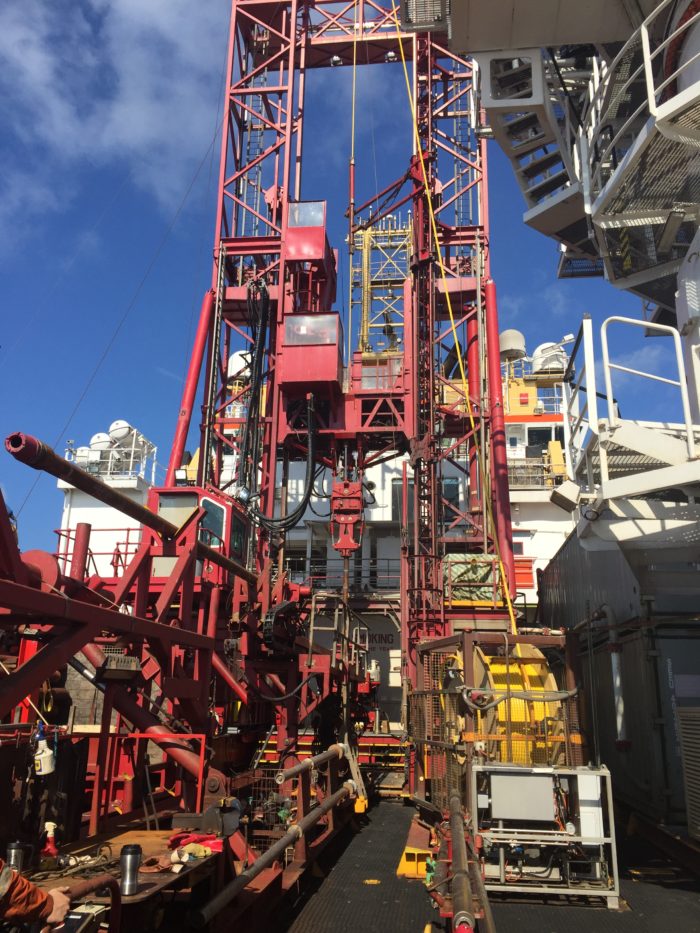RISeR collects North Sea Last Interglacial sediments

One of the most challenging, and most important, goals of the RISeR project was the collection of Last Interglacial sediments from the North Sea, from which to base our relative sea level reconstructions. Over the first 18 months of the project Victor and Natasha along with project team members, in particular Freek Busschers and Carol Cotterill, focused most of their efforts in preparing and planning for this work.
By utilising geophysical and core data made available by the Netherlands Enterprise Agency as part of offshore wind development surveys, Victor conducted a detailed analysis of the subsurface sediments in the Dutch North Sea, in particular focusing on the Hollandse Kust Zuid and Noord development areas. His work, supported by the publically available reports from Fugro and initial pollen analysis from StrataData, provided a picture of the Eemian transgression of the North Sea and from which we selected five core locations in Hollandse Kust Zuid. Hollandse Kust Zuid is beyond the limit of the subsequent ice advance during the Last Glacial Maximum, and therefore Eemian sediments are preserved over a wide elevation range.
Our initial plan to use a NERC vessel wasn’t feasible due to scheduling delays and therefore we had to seek an alternative route, which wasn’t simple as we needed to core up to 40 m below the seabed. Thankfully Fugro were able to support the research with their ship the Normand Flower, fitting it between their extensive offshore work in the North Sea, and allowing us to complete the core collection prior to construction of wind turbines at the site by Vattenfall. Vattenfall kindly provided RISeR access to the site whilst continuing their development preparation.

The Fugro Normand Flower drilling rig during the cruise (Photo: Robert Powell, Fugro)
Covid restrictions meant attending the cruise in person was going to be very challenging, and with Fugro’s reputation for collecting ocean cores, Natasha took the decision to liaise with the ship remotely. It was very bizarre experience to be Chief Scientist on a cruise, from her home office! Communication with the ship went well, and in less than 2 days, Fugro collected ~77 m of sediment from the 5 sites.
The British Ocean Sediment Core Research Facility (BOSCORF) in Southampton very kindly took receipt of the cores, as the University of Leeds campus was closed at the time. This allowed the cores to be safely stored and for BOSCORF to start with the core-logging to measure the physical properties of the sediments; the next stage of the research.
The RISeR team can’t wait to see the cores in person, when Covid restrictions allow. However, we feel a huge sense of achievement to have met this major challenge of the project.
